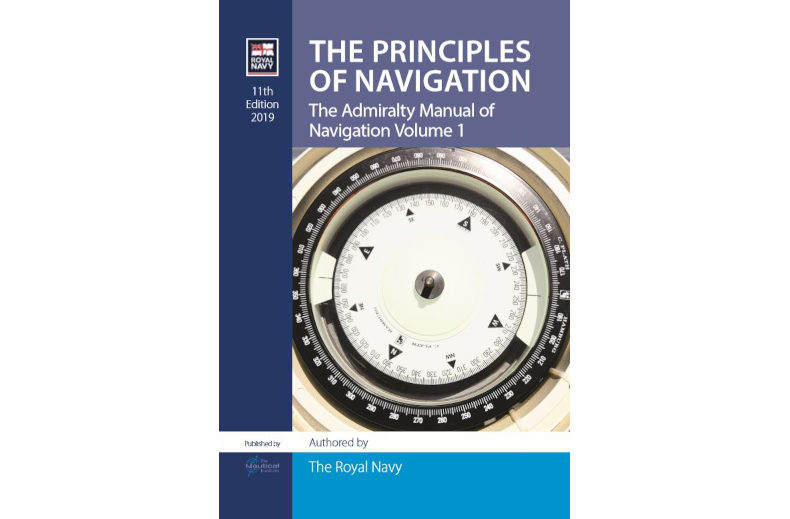The Admiralty Manual of Navigation Vol 1: Principles of Navigation
Price for non-members: £183.00
Price for members: £128.10
Code: 0382
ISBN: 978 1 906915 64 3
Release year: 2019
Weight: 2490 grams
This comprehensive reference lays the foundation for safe and effective navigation at sea, including ocean and coastal passages, pilotage and anchoring. The fundamental principles of navigation developed over centuries of experience in the Royal Navy have been applied to the ECDIS era so that this new edition is 'digital by default'. The manual also contains essential guidance on techniques for navigating with traditional paper charts and for the operation of ships when GPS is not available.
About The Admiralty Manual of Navigation - Vol 1
The Admiralty Manual of Navigation was first published in recognisable form in 1914, and covered the fundamental principles of navigating steel-hulled, steam-powered vessels in and out of sight of land. This new edition, the eleventh, continues this tradition, brought up to date for the 21st century. The ability to navigate safely, in day or night, in all weathers and without the aid of satellite technology, remains a critical capability for the Royal Navy and for all who need to work safely at sea.
This new edition revises and expands upon the previous 2008 edition, with a particular focus on the use of ECDIS. For the first time, it is assumed that the reader will be navigating first and foremost by ECDIS rather than with paper charts and publications, so the book is firmly aimed at the 21st century navigator, using a modern bridge. Traditional techniques are of course retained, but subjects such as fixing the ship or anchoring are discussed and explained with reference to ECDIS rather than paper charts. Navigation aids such as radar, GPS and echo sounders are explained, as are lights, buoys and charting. Suggested bridge organisations are included, which can be tailored for use in almost any ship. This book contains everything the navigator needs to plan a passage from berth to berth, including pilotage, coastal navigation, ocean passages and anchorages.
This Admiralty Manual has been produced by the Royal Navy, with the expert advice of the staffs of the Fleet Navigation and Seamanship Officer, Flag Officer Sea Training, and many current officers serving at sea. The Royal Navy is delighted to publish this book jointly with The Nautical Institute and build on earlier work in making the authoritative Admiralty Manuals of Navigation available to seagoing professionals and the wider public. Over many years, the Admiralty Manuals of Navigation have become the leading publications on the subject and this new edition will continue to benefit any mariner, from the newest cadet to the experienced master.
Foreword
Preface 1
Preface 2
Equality analysis
Acknowledgements and copyright
Conventions
Chapter 1: Introduction to maritime navigation
Chapter 2: Position and direction on the Earth’s surface
Chapter 3: Geodesy
Chapter 4: Digital navigation
Chapter 5: Digital navigation
Chapter 6: Use of WECDIS
Chapter 7: Fixing
Chapter 8: Internal navaids and systems
Chapter 9: External aids to navigation
Chapter 10: Tides, currents and tidal streams
Chapter 11: Ocean navigation
Chapter 12: Coastal navigation
Chapter 13: Pilotage and blind pilotage
Chapter 14: Anchoring
Chapter 15: Navigational errors
Chapter 16: Relative velocity
Chapter 17: Surveying for non-surveyors
Chapter 18: Bridge organisation and management
Appendix 1: Plane trigonometry
Appendix 2: Spherical trigonometry
Appendix 3: The spherical Earth
Appendix 4: Projections
Appendix 5: The spheroidal Earth
Appendix 6: Vertical sextant angles
Appendix 7: Doubling the angle on the bow
Appendix 8: Errors in terrestrial position lines
Appendix 9: Paper charts and chartwork
Royal Navy authorship
Alastair Harris, a third-generation submariner, joined the Royal Navy in 2004 as a Warfare Officer. Completing his training in a number of HM ships large and small including Exeter, Cardiff, Grimsby and Severn, he volunteered for submarines and in 2007 was appointed to HMS Vanguard (STBD) as Correspondence Officer, and was subsequently awarded the Sir Max Horton Prize for the best junior officer in initial submarine training.
Selected for navigation training, he was appointed to HMS Trafalgar as Signals and Communications Officer but swiftly became the Navigating Officer, navigating the submarine through a busy period of exercises and operations before she decommissioned in 2009.
Alastair’s next assignment was to HMS Talent, again as Navigating Officer, before a final post at the Admiralty Interview Board in Gosport. Leaving the Royal Navy in 2011, Alastair worked in the private sector before being appointed to the post of Navy Author (Navigation) in 2015.

